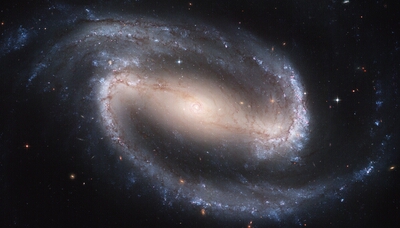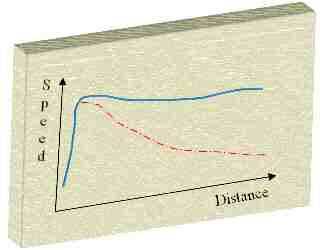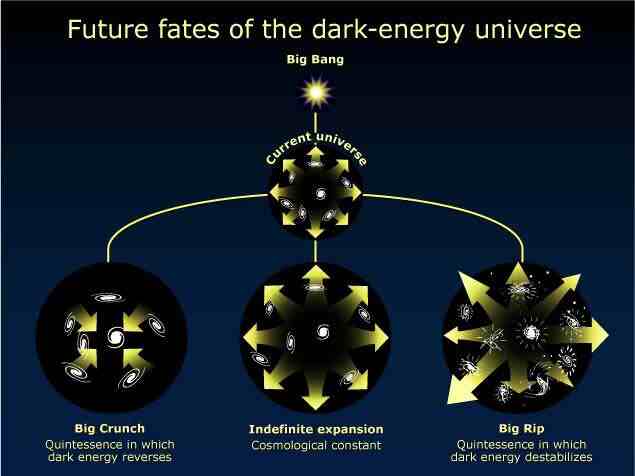1.c) Stars, expansion of the Universe and dark energy
1.c.1. Concept and characteristics of stars
Our knowledge of the characteristics of different types of stars is continually evolving, on par with the improvements made in observations carried out.
Below, a few basic concepts will be briefly touched upon because one can find detailed information on Wikipedia. However, we are most interested in the effects produced by stars on the elasticity of the reticular structure of matter or Global Aether –quantum foam, strings or space-time with mechanical properties–, as well as the subsequent dark energy as we discuss further on.
-
What are the stars?
The concept of a star is not very well defined; in theory, they are astronomical objects, which –due to their size and gravitational force– have begun the nuclear fusion reactions converting Hydrogen into Helium, thus emitting a significant amount of electromagnetic energy and other particles. They release so much energy that, throughout their lives, they lose a notable percentage of their mass. An example is our Sun.
Nonetheless, there are stars that –after finishing all the available Hydrogen– have a vast increase in volume, due to the change of dominant forces in their internal composition. We call them red giants.
Others go through the supernova phase –a giant explosion– and become neutron stars.
-
Origin, birth, and formation of stars
As stated in Wikipedia, processes of formation of stars are unknown to some extent. There are numerous variables involved; such as composition and concentration of cosmic dust, magnetic field, temperature, pressure, nuclear fusion processes, and proximity to previous supernova explosions.
Barred spiral galaxy NASA - NGC 1300
(Public domain image)
According to Global Physics, it seems that many stars are born near the galactic center, giving rise to the arms of the spiral galaxies by the fusion and conversion of the stars’ mass into the Global Aether. As a result, they are displaced outward as they rotate. Hence, many of these stars have the same linear velocity and different orbit.
Death of stars and supernovae
Astrophysics has observed the expansion of the Universe by using supernovas or stars dying in great explosions as points of reference in space.
Linear velocity of stars in galaxies 
Types of stars
There are various types of stars, with particular characteristics like size and mass.
When the death of a star is imminent, a sudden explosion or supernova may occur.
After the explosion of type II supernovae, neutron stars form. These stars must have a mass above 9 or 10 times that of the Sun, and below some other limit. The origin and formation process of neutron stars is more or less known, according to the explanations provided by Wikipedia.
As we said earlier, stars emit light, and this makes them lose mass when heavier elements create, such as occurs in Hydrogen fusion. Another classification criterion for stars is whether they contain heavy atoms; this also gives us an idea of their age.
Another possibility is if the neutron star were captivating mass and became a black hole.
One could say they are systems of dynamic equilibrium of fundamental forces, but on a colossal scale in both space and time.
1.c.2. Dark energy and expansion of the Universe
The model of Global Mechanics –part of Global Physics theory of everything– offers clues to understand the expansion of the Universe and, its cause –dark energy–, and its relation with the hypothetical dark matter.
After the detection of gravitational waves –GW171017– generated by the merger of two neutron stars, the accumulative expansion of the Universe is around 70 km/s per megaparsec questioning the Big Bang theory.
"Groups of galaxies confirm dark energy
By combining all the data, we have arrived at the most substantial piece of evidence to suggest that dark energy is the cosmological constant; or in other words, that nothing weighs something.
‘Nothing’ in this case refers to the fact that dark energy is the energy of the vacuum, possibly a field of very light particles in an unstable state; a residue of the conditions present in the Universe just after the initial Big Bang.”
El País 17-12-2008
The term expansion of the Universe refers to the observable fact that galaxies seem to be moving away from each other when they should be getting closer due to gravity force.
The concept of dark energy refers to the cause of this movement because it is unknown what dark energy is.
According to Wikipedia, observed expansion of the Universe corresponds to dark energy effect as a scalar field that fills all space in the Universe and results in a repulsive gravitational force. We can see here how Wikipedia seems to use a strange definition of space; it appears to be able to be full and empty at the same time, or to be empty and have dark and magical properties.
The terminology used by Wikipedia makes sense to a certain extent if one considers that scientists define space as points of the existence of light and mass. Which is to say, the reticules of unbreakable filaments of the Global Aether (gravitational - kinetic - mass) that supports gravity, kinetic energy, and strong forces in Global Mechanics.
Before presenting the proposals of Global Physics, let us discuss the approximation of Modern Physics to dark energy topic.
1.c.2.a) Acceleration or deceleration of expansion of the Universe in Modern Physics
Predominant model in Cosmology throughout most of the last century was a deceleration of the Universe since the initial explosion of the Big Bang. This deceleration of expansion of the Universe would be due to gravitational attraction generated by the mass of stars.
NASA (Public domain image)

Discussion centered on whether the expansion of the Universe would eventually stop, giving way to a period of contraction of the Universe, or whether it would remain in an indefinite increase. A simple analysis shows the result would depend on the total mass of the Universe itself.
This figure shows the possible evolution of the Universe as a function of the relationship between dark energy and gravitational forces.
There are various ways of representing dark energy –cause of the expansion of the Universe– mathematically. The most general idea was the cosmological constant of Einstein. As usual in Einstein’s theories, whether this constant exists or not is perfect. Einstein’s Theory of Relativity adapts itself almost as well as Darwin’s theory of evolution. We do not know what they will say if it has ever confirmed that, both things exist at the same time!
In theory, the cause of the expansion of the Universe is the Big Bang, an enormous initial explosion that generated all the matter in the Universe. However, in the last decade of last century, it appeared expansion of the Universe is accelerating. In other words, the separation velocity of galaxies is ever increasing. This phenomenon requires some force or energy to justify it, and because there is no satisfactory theory to explain this energy in outer space, its name is dark energy.
In other words, Einstein's cosmological constant has nothing to do with dark energy, which incorporates a different expansion model. However, dark energy is compatible with the attractive forces of gravity.
Therefore, we can point to two radically different models of expansion of the universe.
Big Bang and Einstein's cosmological constant
The cause would be inertia of the hypothetical initial explosion of the Big Bang with plus the inflation stage facing the forces of gravity.
It is a homogeneous expansion throughout the universe, and it appears in field equations as a constant, without needing a matrix tensor.
-
The stationary universe and dark energy
Its denomination shows an unknown cause. Consequently, we do not know when it will stop.
It does not have to be homogeneous –according to Global Physics, it is not– and everything indicates that this expansion occurs in a stationary universe. The age of the Universe 13.7 billion years seems to be the time limit of the observable universe ** given the latest estimates of the expansion of the universe by the detection of gravitational waves –GW171017.
“Ten years after discovering dark energy, physicists still don’t know what it is.”
El País 11-06-2008
1.c.2.b) Dark energy in the Global Physics
Going back to Global Astrophysics, let us present the main developments and precisions regarding astronomical objects in outer space, expansion of the Universe and dark energy.
Global Astrophysics uses a different approach, as it proposes the simultaneous existence of processes of contraction and expansion of the Universe. Also, these processes do not alter Euclidean space, merely the volume occupied by the Global Aether. In other words, Euclidean space is a suitable concept, and that is better not to revise ever for the sake of sound reasoning.
-
The existence of contraction and expansion of the Universe
We must bear in mind that both the expansion and contraction of the Universe are indeed coherent with the available information. Of course, the expansion is predominant on the big scale.
As mentioned in the section on big black balls, the creation of mass –black interaction– implies compression or concentration of the Global Aether. Consequently, they provoke contraction of the Universe.
Also, the capture of electromagnetic energy also entails an increase in the mass of big black balls and concentration of the Global Aether.
Meanwhile, the white fountains or high emitters of electromagnetic radiation, generally known as stars, produce expansion of the Universe.
Expansion of the Universe is not occurring in one particular direction, but equally for all-stars; it is as if each star was getting further away from all its neighboring stars.
Home physical experiment
The usual visual model thinks of stars as dots on an inflating balloon, so all points are getting further and further away from each other.
Mechanisms of dark energy
Elastic characteristics of reticular matter allow the energy of reversible deformation, accumulated in the mass, to constitute so-called dark energy, once reversion begins with nuclear fusion processes in stars.
In effect, the life of stars –emitting electromagnetic waves– is causing the opposite phenomenon to the loops or curls in the formation of mass. Consequently, there will be an expansion of the Global Aether; or, in an imprecise and incorrect terminology from our point of view, expansion of the Universe or space.
Interestingly enough, it seems that the most appropriate term for dark energy could be white energy, which would also make dark matter unnecessary.
The mechanism of dark energy is increasing in the volume of the Global Aether, as its elasticity causes displacement of the rest of the reticular structure of matter. This mechanism implies a new type of movement, the movement of Global Aether; we say new because it has not a consideration in the application of Newton’s Laws of Dynamics.
According to Global Mechanics, supporting medium of electromagnetic waves is gravitational field –LUM Aether (Luminiferous, universal, and mobile) or tension of the longitudinal curvature of Global Aether. A direct consequence is that velocity of electromagnetic waves will be additive concerning displacement of this tension.
To be compatible with the Theory of Cosmic Inflation, the velocity of decompression of Global Aether should be higher than the speed of light. In this case, collisions between matter and antimatter could help verification of this statement, though we doubt current technology has the necessary precision.
As mentioned in the book on Global Mechanics, another mechanism that could provoke displacements in Global Aether could be the neutrinos, if they came from longitudinal folds in the filaments of Global Aether. As we know, stars produce large quantities of neutrinos.
